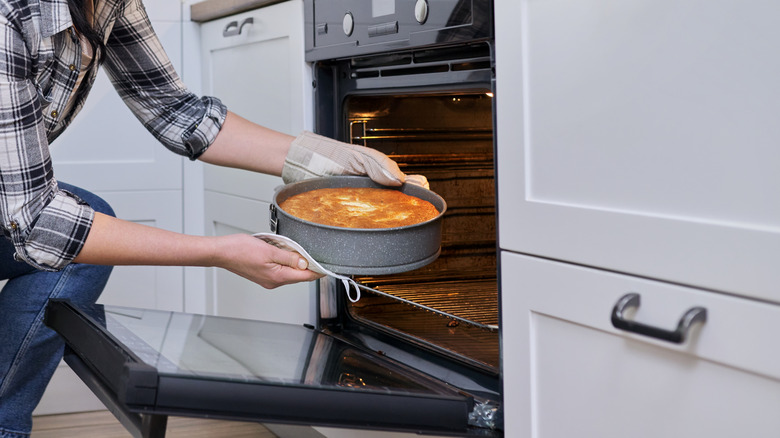The Most Important Tip You Need When Baking With Honey
If you don't have sugar on hand but your recipe calls for it, honey can usually work in its place. However, you'll need to make a few changes in order to achieve the same results. As Saratoga Tea & Honey explains, honey is much sweeter than sugar, so a one-to-one substitution won't work. Instead, one cup of sugar equals ½ to ⅔ of a cup of honey. Because honey is naturally more runny than sugar, to retain the same batter consistency, you'll need to reduce the other liquid-based ingredients in your recipe by a fourth. It also helps to add in a pinch of baking soda, per Waxing Kara. Because honey is acidic, it interferes with the rising of baked goods, but extra baking soda will counteract this.
In addition to altering the texture of your baked goods, honey can also change the taste. As Taste of Home points out, darker honey usually has a much stronger flavor. If you want your dessert to have the same neutral sweetness as sugar, golden clover honey is the best. But no matter what type of honey you decide to go with, the most important adjustment you need to make has to do with the baking temperature.
Honey bakes differently than sugar
Honey and sugar are similar in that they're both sweet, but they're very different in terms of composition. According to the University of Arkansas' Division of Agriculture, honey and sugar both contain glucose and fructose, but the ratios of each are different. Honey contains a higher percentage of fructose, making it sweeter than sugar, and also contains small amounts of pollen, protein, vitamins, and minerals. Because of their slightly different makeup, sugar and honey bake differently.
As Sioux Honey explains, honey browns faster than sugar does, and that means it burns at a faster rate, too. To prevent this from happening, it's necessary to set your oven to a lower temperature. About 25 degrees lower than the original should do the trick, but as Brightland notes, this depends on the recipe and oven, so it's best to just monitor whatever you're baking while it's in the oven. The top of your baked good will be the first to brown, so Brightland recommends covering it with foil if it starts to darken before the rest has the chance to finish baking. But as long as your oven temperature is reduced, you shouldn't be too concerned about burning.

